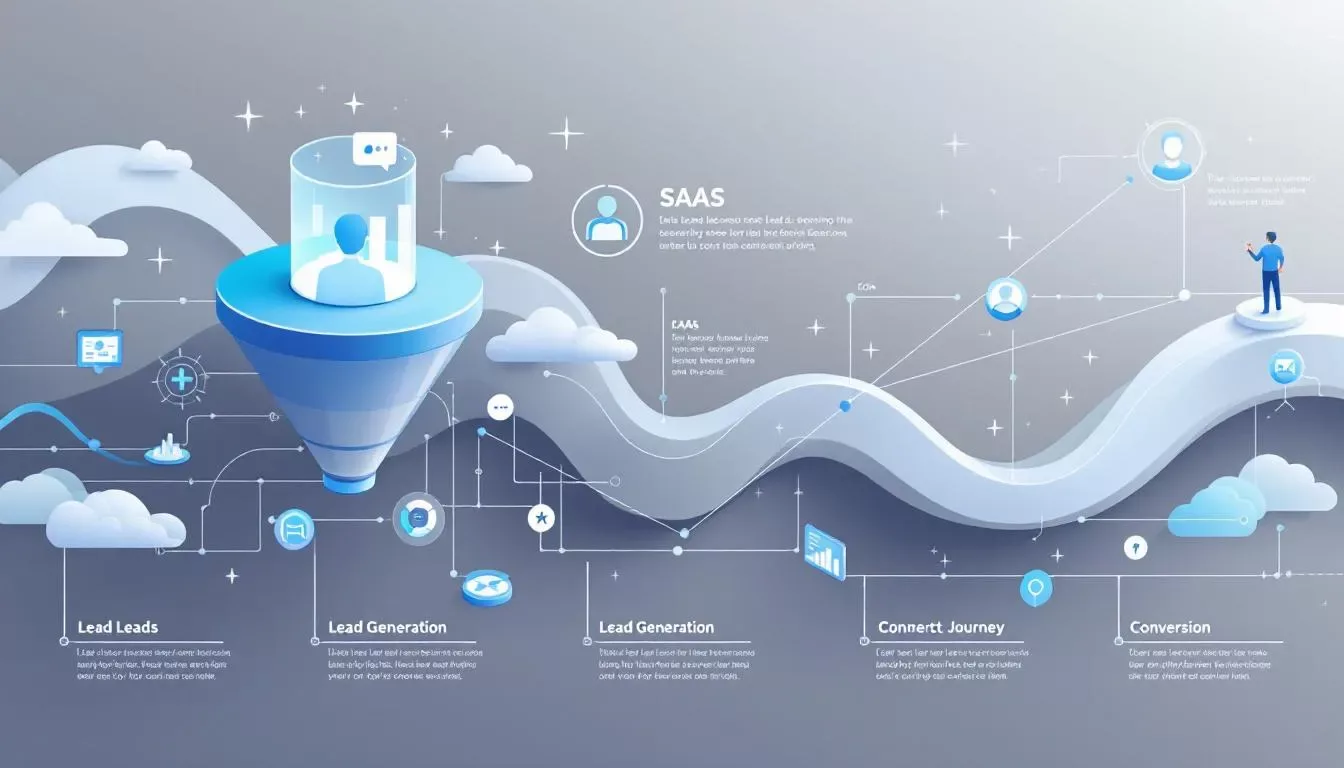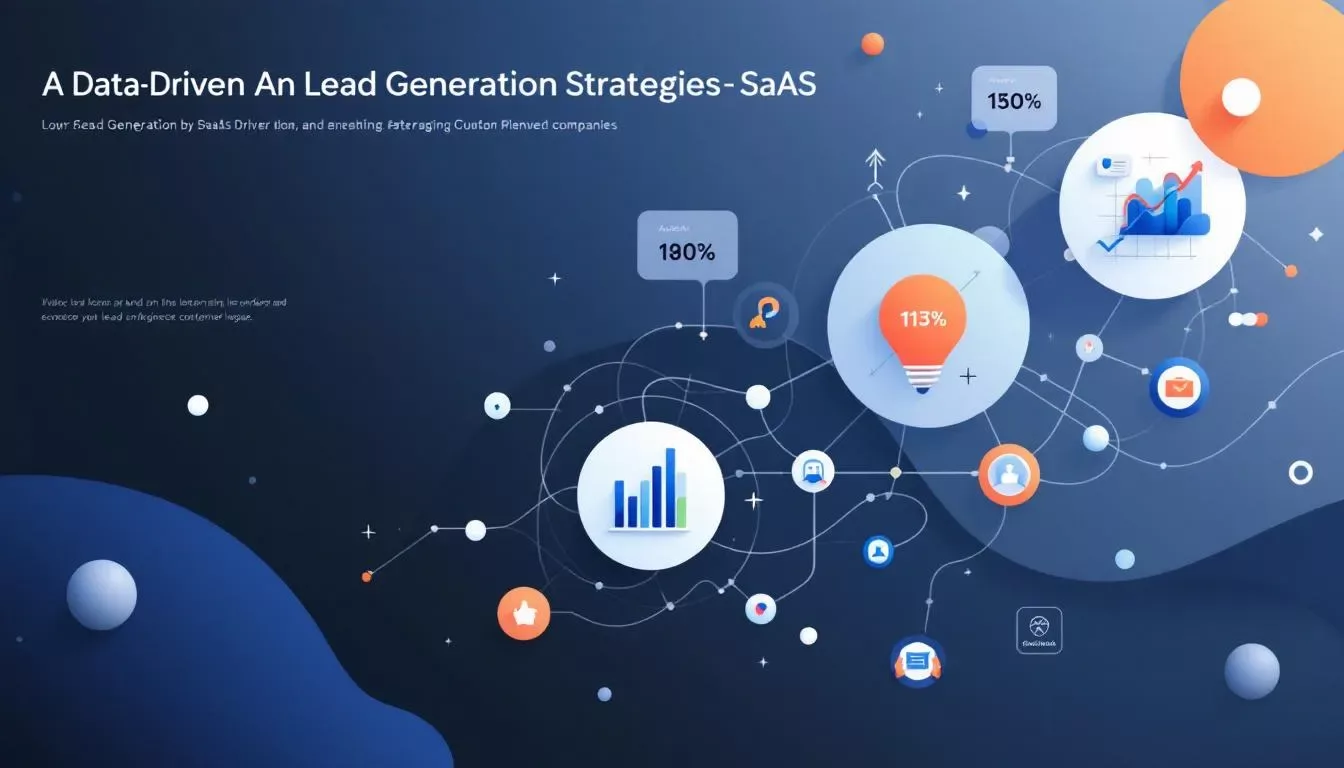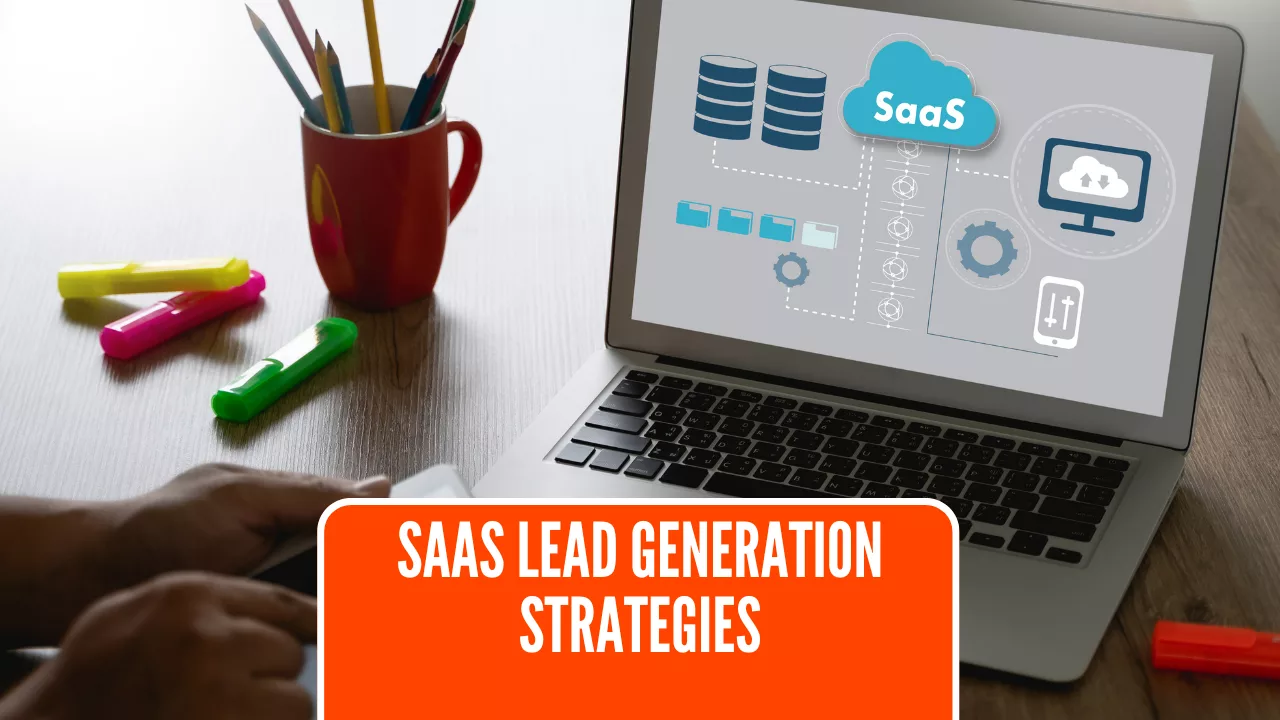Generating SaaS sales leads is crucial for any subscription-based software business (including LeadSync!). The process requires effective strategies to convert potential customers into paying users. In this article, we’ll explore actionable ways to attract and convert leads, including content marketing, social media engagement, and aligning your sales and marketing teams.
Quick Takeaways
- Understanding your Ideal Customer Profile (ICP) is crucial for targeting effective leads and tailoring marketing strategies.
- Aligning sales and marketing teams through unified dashboards enhances collaboration and boosts lead generation conversion rates.
- Effective lead generation strategies for SaaS include content marketing, paid advertising, social media engagement, and leveraging customer referrals.
Understanding SaaS Sales Leads

SaaS sales leads represent potential customers who show interest in subscription-based software services. Understanding what qualifies as a lead in the saas business helps in crafting effective sales strategies. Effective lead generation maintains a steady stream of sales qualified leads and product qualified lead, keeping your sales pipeline robust.
The primary goal of SaaS lead generation is to attract leads likely to become paying customers. This process often involves multiple interactions and touchpoints, necessitating strong relationships with leads throughout the sales process. Understanding customer pain points and tailoring your SaaS solutions to meet specific needs significantly improves your chances of converting leads into loyal customers.
The Role of Marketing and Sales Teams in Lead Generation
Misalignment between marketing and sales teams can lead to missed sales opportunities. To avoid this, sales and marketing teams should build unified dashboards that display the entire sales funnel. This allows both teams to have a clear view of the lead generation process, fostering better collaboration and more effective strategies.
Sales representatives often provide valuable insights on customer pain points, which the marketing team can use to create relevant content. Identifying new online platforms for lead prospecting helps marketing teams aid sales teams in reaching potential customers more effectively. Implementing Account-Based Marketing (ABM) can also lead to improved collaboration between marketing and sales teams, allowing for more coordinated efforts in targeting potential high-value customers.
Unified marketing and sales strategies lead to more effective outreach and engagement, ultimately resulting in higher conversion rates and more qualified leads. Seamless collaboration between both teams enhances the likelihood of successful lead generation, driving growth and revenue for the SaaS company, while optimizing marketing efforts and sales efforts.
Identifying Your Ideal Customer Profile (ICP)
An Ideal Customer Profile (ICP) serves as a comprehensive guide to identify and categorize the best prospective customers for your product. A precise understanding of your target audience includes their behaviors, needs, and decision-making patterns. Documenting an ICP compiles essential data on customer characteristics, preferences, and behaviors, guiding your lead generation efforts.
Using feedback from customers and market data can reveal common pain points that your product addresses, enhancing your ICP’s accuracy. Researching shared attributes of top customers can highlight key factors such as company size, industry, and budget that impact lead quality.
Using various sources is effective in developing accurate ICPs and personas. This includes:
- Customer interviews
- CRM analytics
- Sales team insights
- Market research
- Third-party intent data
A well-defined ICP allows you to tailor marketing messages and sales pitches to resonate with your target audience, leading to more effective lead generation and higher conversion rates.
Effective Lead Generation Strategies for SaaS Companies

Lead generation for SaaS companies involves attracting potential business clients and nurturing them into paying customers through various lead generation strategy. Channels aligned with your ideal customers’ behavior and preferences should be considered for lead acquisition. Creating compelling content, leveraging social media, and running paid advertising campaigns are effective strategies to generate leads for SaaS sales.
Innovative lead capture methods can serve as competitive differentiation in the SaaS industry. Showcasing customer successes on social media helps build trust and acts as social proof, influencing potential leads to capture leads.
Let’s dive deeper into some of these strategies.
Content Marketing and SEO
Content marketing is pivotal for B2B SaaS companies as it helps generate organic leads and builds overall credibility. The benefits of content marketing for lead generation include generating organic leads, building credibility, and showcasing expertise. SEO enhances the visibility of SaaS products online, which increases the likelihood of lead conversion.
Improving brand visibility and boosting conversion chances through search engine optimization significantly enhances lead generation for SaaS companies. Combining content marketing with SEO ensures that your content reaches the right audience, driving more traffic to your site and generating more qualified leads.
Paid Advertising and PPC Campaigns
Paid advertising offers SaaS companies immediate visibility and enables them to effectively target high purchase intent prospects. With 79% of brands finding PPC marketing significant for their growth, its importance in generating rapid lead engagement cannot be overstated.
The best-paid platforms for lead generation should have granular targeting features. Additionally, they should include CRM integration and closed-loop reporting. Effective PPC campaigns require thorough research to identify suitable keywords and create landing pages that convert. Investing in paid advertising allows SaaS companies to quickly capture high-quality leads and accelerate growth.
Leveraging Social Media Platforms
Engaging with potential leads on social media platforms is crucial for nurturing relationships and capturing leads. Effective lead capture in social media marketing requires engaging where potential customers are present. Platforms like LinkedIn are particularly effective for reaching business decision-makers in SaaS lead generation.
Social media platforms like Facebook, Instagram, and LinkedIn should be leveraged for lead generation. Actively participating in online communities and showcasing customer successes helps SaaS companies build trust and attract more qualified leads.
Outbound Lead Generation Techniques

Outbound lead generation aims to convert interested individuals or organizations into potential customers, which is crucial for steady growth in SaaS companies. Successful outbound saas lead generation strategies may include:
- Cold email campaigns
- Cold calling
- LinkedIn outreach
- Other multi-channel methods tailored to the target audience.
Essential tools for successful outbound sales include sales intelligence platforms like HubSpot CRM, cold outreach software, and personalization tools to craft unique messages. Data-driven approaches help SaaS companies optimize outbound lead generation by making informed decisions based on customer insights.
Let’s explore some of these techniques in more detail.
Cold Email Campaigns
Cold email campaigns aim primarily to generate outbound leads, often facilitated by tools like Saleshandy for effective outreach. When evaluating cold outreach tools, prioritize deliverability, personalization, and CRM integration. A personalized approach is essential for effective messaging; addressing pain points and specific use cases can greatly enhance resonance with prospects.
Understanding the target prospect’s needs allows tailoring of messaging to specific situations, which improves engagement. Personalized and targeted messaging boosts the efficacy of cold email techniques and builds trust, leading to higher conversion rates.
Cold Calling Best Practices
Successful cold calling relies on targeting qualified leads to create meaningful interactions and build interest through phone calls. Building rapport and booking appointments with ease are the hallmarks of effective cold calling strategies.
Focusing on the right prospects and delivering the right message at the right time enhances cold calling effectiveness for SaaS companies, leading to more sales meetings.
LinkedIn Outreach
Building a personal brand on LinkedIn is key for establishing trust and credibility during outreach efforts. LinkedIn outreach is essential for personalized outreach and social selling, helping to generate qualified leads. Trust and credibility established through personal branding can significantly enhance the effectiveness of lead generation strategies on LinkedIn.
Actively engaging with potential leads on LinkedIn and providing valuable content builds strong relationships and attracts more qualified leads.
Utilizing Free Trials and Product Demos
Free trials have the following characteristics:
- They attract fewer signups than paid trials.
- They yield higher conversion rates and return on investment.
- They are most effective when backed by a robust onboarding process that guides users through the product.
Additionally, SaaS companies often use both trials and demos to enable potential customers to experience the product before committing.
Live product demos offer several advantages:
- They allow for tailored presentations that address specific customer needs, unlike pre-recorded demos.
- They can serve as instructional guides for trial users, ensuring they engage with the key features effectively.
- When combined with free trials, they help users quickly grasp complex software, enhancing the onboarding experience.
For enterprise software, demos are often more effective than free trials since decision-makers may not be the end users. Using a self-serve onboarding model can significantly boost the conversion rate from free trials to paid subscriptions.
Building an Effective Sales Funnel

The sales funnel for SaaS consists of distinct stages that guide potential customers from initial awareness to final purchase. Having a sales funnel is crucial for SaaS companies as it helps in guiding potential customers effectively through the buying process. During the exploration stage of a SaaS sales cycle, customers describe their problems and explore product aspects.
Key elements and actions within the sales funnel include:
- At the bottom of the sales funnel, the closure action takes place, requiring clear pricing and customer reviews to facilitate final decisions.
- Trust-building and engagement at various touchpoints within the SaaS sales funnel enhance conversion rates.
- A seamless user experience and optimized onboarding processes are vital for enhancing conversions throughout the sales funnel.
Defining lead status and transition criteria at each stage helps to monitor progress and optimize the sales funnel. The ultimate goal of the sales funnel is to convert high-quality leads into customers.
Nurturing Leads Through Email Automation
Timely and relevant lead nurturing emails help maintain engagement until leads are ready to make a purchase. Effective nurturing involves sending emails right after signups or when leads show interest but do not convert. A good nurturing flow consists of educational content that aligns with the lead’s stage in the buying journey.
Nurturing emails can utilize customer success stories to build trust and demonstrate the product’s effectiveness. Highlighting specific features in follow-up emails can address key pain points for leads and encourage customer interactions to nurture leads, resulting in satisfied customers.
Personalized email content based on user behavior increases the likelihood of conversions and enhances customer lifetime value.
Measuring and Optimizing Lead Generation Efforts
Measuring and optimizing outbound lead generation efforts is important to assess efficiency, identify areas for improvement, and increase qualified leads and conversions. During the growth stage of lead generation, businesses should focus on systematizing processes for repeatable, predictable growth. Performance in outbound lead generation can be measured and optimized using measurable KPIs and A/B testing.
Using a variety of lead generation strategies is essential for an effective lead generation strategy in SaaS marketing. By continuously measuring and optimizing lead generation efforts, SaaS companies can ensure that they are always on the path to achieving their goals and driving sustainable growth.
Key Metrics and KPIs
Key performance indicators, or KPIs, are essential for assessing the effectiveness of lead generation efforts. They help determine the level of success achieved in this area. Customer acquisition cost (CAC) is a crucial metric for evaluating lead generation success. Lead generation metrics for SaaS companies should focus on quality indicators predicting revenue impact.
Sales funnel metrics such as revenue growth and customer churn rates help evaluate the effectiveness of the funnel. The right KPIs offer valuable insights into sales performance. These insights can help you adjust your sales funnel effectively. Defining and monitoring KPIs, conducting A/B testing, and implementing campaign optimization are key actions to measure and optimize outbound lead generation success.
A/B Testing for Continuous Improvement
A/B testing can significantly impact lead generation by allowing businesses to refine their marketing messages. A/B testing is a systematic approach used by businesses to compare two versions of a marketing asset to determine which one performs better. Through continuous testing and improvement, A/B testing enables companies to make data-driven decisions that enhance their lead generation processes.
To effectively implement A/B testing, organizations should identify key metrics, define hypotheses, and execute tests with clear objectives in mind. By consistently applying A/B testing, SaaS companies can ensure their lead generation strategies are always optimized for the best possible results.
Common Challenges in SaaS Lead Generation
SaaS companies often struggle to attract the right audience due to the need for highly targeted messaging that addresses specific pain points. A key difference in standing out in a crowded SaaS market requires a compelling brand message that resonates with potential customers. Converting leads into active users can be challenging if the unique value proposition isn’t clearly articulated.
The conversion stage focuses not just on acquiring customers but also on retaining them for ongoing revenue. Building a dedicated sales development representative (SDR) team can be resource-intensive and challenging for growing SaaS companies. Inconsistent lead flow can create difficulties in planning sales reps activities and forecasting revenue effectively, highlighting the importance of demand generation.
Retention strategies are essential for subscription-based SaaS businesses, focusing on maintaining customer relationships post-purchase. Addressing these common challenges helps SaaS companies improve their lead generation processes and achieve sustainable growth, ultimately contributing to their monthly recurring revenue and enhancing customer retention.
similar strategies to improve their lead generation efforts.
Integrating Account-Based Marketing (ABM)
ICPs are fundamental for account-based marketing (ABM) strategies, directing targeting efforts toward the most suitable customer segments. ABM focuses on developing tailored marketing strategies directed at specific high-value accounts rather than a broader audience.
Leveraging Customer Referrals
A referral program in the context of SaaS lead generation is a program that incentivizes existing customers to refer new clients. Referral programs can enhance brand awareness significantly, as shared experiences from existing users lead to more signups. Customers acquired through referrals generally have a higher lifetime value due to increased engagement with the brand.
Implementing referral programs can lower customer acquisition costs since payments are made only when a referred lead converts. Referred customers tend to exhibit lower churn rates compared to those acquired through other marketing channels. By leveraging customer referrals, SaaS companies can generate high-quality leads and achieve sustainable growth.
Platforms such as Rewardful and PartnerStack can help you set up referral programs.
Wrapping Up…
From understanding SaaS sales leads to aligning marketing and sales teams, identifying ideal customer profiles, and leveraging various lead generation techniques, we’ve covered most of it. Content marketing, SEO, paid advertising, social media, outbound techniques, free trials, and product demos are all essential components of an effective lead generation strategy.
By measuring and optimizing lead generation efforts, addressing common challenges, and learning from successful case studies, SaaS companies can achieve sustainable growth. Integrating account-based marketing and leveraging customer referrals further enhance lead generation efforts. As you implement these strategies, remember that the key to success lies in continuous improvement and adaptation. Are you ready to transform your lead generation efforts and thrive in the competitive SaaS market?
Frequently Asked Questions
What is the primary goal of lead generation for SaaS companies?
The main aim of lead generation for SaaS companies is to attract qualified leads that are likely to convert into paying customers. This focus helps drive growth and sustainability in a competitive market.
How can marketing and sales teams work together effectively in lead generation?
To boost lead generation, marketing and sales teams should create unified dashboards, share insights regularly, and adopt Account-Based Marketing strategies. This collaboration enhances communication and aligns their goals for better results.
What is an Ideal Customer Profile (ICP)?
An Ideal Customer Profile (ICP) is a detailed description of your perfect customer, outlining their characteristics, behaviors, and needs to help you target potential clients more effectively. Knowing your ICP makes it easier to connect with the right audience for your product.
Why are free trials and product demos important for SaaS lead generation?
Free trials and product demos are essential because they let potential customers test the product firsthand, which boosts conversion rates and ensures they’re more confident in their purchase. This approach ultimately leads to better returns on your marketing efforts.
How can SaaS companies measure and optimize their lead generation efforts?
To effectively measure and optimize lead generation, SaaS companies should focus on key performance indicators (KPIs) and conduct A/B testing to refine their marketing strategies. Using data-driven insights will help you continuously improve and attract more leads.

